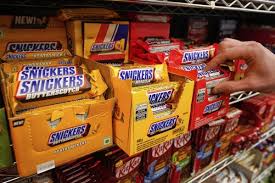Economy Candy’s shelves brim with sweets from around the world – gummies from Germany, lollipops from Spain, chocolates from Japan and a panoply of candies from across the U.S.
Standing amid it all, columns of bright jellybeans to his left and exotic Kit Kats to his right, owner Mitchell Cohen is quick with his assessment of how many of this shop’s 2,000-plus items are affected by the historic round of tariffs announced by President Donald Trump.
“I think all of them,” Cohen says at his store on New York’s Lower East Side.
Few corners of the American economy are untouched, directly or indirectly, by the sweeping tariffs being imposed by Trump. Even a little store like Economy Candy.
Cohen had just begun to feel a barrage of inflation-driven price increases from suppliers ease when the tariff threats arrived. For a business with a name like Economy Candy, he wants to remain affordable but fears how high some prices may have to climb in the coming months.
“I think it’s gonna be another round of this hyperinflation on some items,” says 39-year-old Cohen. “If we’re putting tariffs everywhere, it is going to go up.”
Stepping into Economy Candy feels like a time warp. Its name is emblazoned on a sign in a vintage, blaring red script, and crossing below its green-and-white striped awning, past the bins of Smarties, butterscotches and Lemonheads in the front window, an indecipherable sweetness fills the air, oldies music sounds overhead and customers mill around stacks of candy bars they forgot still existed.
It represents just a blip in the country’s $54 billion candy industry. But it was already feeling the weight of surges in prices of cocoa and other ingredients before tariffs were layered on.
Candy and gum prices are up about 34% from five years ago and 89% from 2005, according to Consumer Price Index data. Price, according to the National Confectioners Association, has become the top factor in consumers’ candy purchase decisions, outweighing a buyer’s mood.


